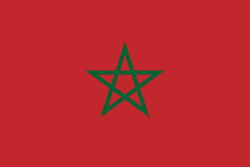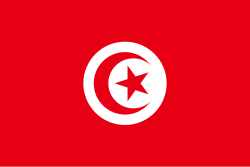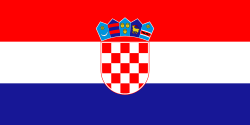Spelartrupper under världsmästerskapet i fotboll 1998
| Den här artikeln behöver källhänvisningar för att kunna verifieras. (2024-07) Åtgärda genom att lägga till pålitliga källor (gärna som fotnoter). Uppgifter utan källhänvisning kan ifrågasättas och tas bort utan att det behöver diskuteras på diskussionssidan. |
Världsmästerskapet i fotboll 1998: Spelartrupper
Grupp A
Förbundskapten: Mário Zagallo
|
Förbundskapten: Henri Michel
|
Förbundskapten: Egil Olsen
Förbundskapten: Craig Brown
|
Grupp B
Förbundskapten: Herbert Prohaska
|
Förbundskapten: Claude Le Roy
|
Förbundskapten: Nelson Acosta
|
Förbundskapten: Cesare Maldini
|
Grupp C
Förbundskapten: Bo Johansson
|
Förbundskapten: Aimé Jacquet
|
Förbundskapten: Carlos Alberto Parreira
|
Förbundskapten: Philippe Troussier
|
Grupp D
Förbundskapten: Hristo Bonev
|
Förbundskapten: Bora Milutinović
|
Förbundskapten: Paulo Cesar Carpeggiani
|
Förbundskapten: Javier Clemente
|
Grupp E
Förbundskapten: Georges Leekens
|
Förbundskapten: Manuel Lapuente
|
Förbundskapten: Guus Hiddink
|
Förbundskapten: Cha Bum-kun
|
Grupp F
Förbundskapten: Berti Vogts
|
Förbundskapten: Jalal Talebi
|
Förbundskapten: Steve Sampson
|
Förbundskapten: Slobodan Santrač
|
Grupp G
Förbundskapten: Hernán Gómez
|
Förbundskapten: Glenn Hoddle
|
Förbundskapten: Anghel Iordănescu
|
Förbundskapten: Henryk Kasperczak
|
Grupp H
Förbundskapten: Daniel Passarella
|
Förbundskapten: Miroslav Blažević
|
Förbundskapten: René Simoes
|
Förbundskapten: Takeshi Okada
|
| |||||||||||||||||
| |||||||||||
Media som används på denna webbplats
Författare/Upphovsman: Tkgd2007, Licens: CC BY-SA 3.0
A new incarnation of Image:Question_book-3.svg, which was uploaded by user AzaToth. This file is available on the English version of Wikipedia under the filename en:Image:Question book-new.svg
Flag of Portugal, created by Columbano Bordalo Pinheiro (1857–1929), officially adopted by Portuguese government in June 30th 1911 (in use since about November 1910). Color shades matching the RGB values officially reccomended here. (PMS values should be used for direct ink or textile; CMYK for 4-color offset printing on paper; this is an image for screen display, RGB should be used.)
Författare/Upphovsman: Gutten på Hemsen, Licens: CC0
Flag of Norway with colors from the previous version on Commons. This file is used to discuss the colors of the Norwegian flag.
Flag of England. Saint George's cross (a red cross on a white background), used as the Flag of England, the Italian city of Genoa and various other places.
Det är enkelt att lägga till en ram runt den här bilden
Färg som används: National flag | South African Government and Pantone Color Picker
| grön | rendered as RGB 0 119 73 | Pantone 3415 C |
| gul | rendered as RGB 255 184 28 | Pantone 1235 C |
| röd | rendered as RGB 224 60 49 | Pantone 179 C |
| blå | rendered as RGB 0 20 137 | Pantone Reflex Blue C |
| vit | rendered as RGB 255 255 255 | |
| svart | rendered as RGB 0 0 0 |
The civil ensign and flag of Belgium. It is identical to Image:Flag of Belgium.svg except that it has a 2:3 ratio, instead of 13:15.
Flag of Iran. The tricolor flag was introduced in 1906, but after the Islamic Revolution of 1979 the Arabic words 'Allahu akbar' ('God is great'), written in the Kufic script of the Qur'an and repeated 22 times, were added to the red and green strips where they border the white central strip and in the middle is the emblem of Iran (which is a stylized Persian alphabet of the Arabic word Allah ("God")).
The official ISIRI standard (translation at FotW) gives two slightly different methods of construction for the flag: a compass-and-straightedge construction used for File:Flag of Iran (official).svg, and a "simplified" construction sheet with rational numbers used for this file.
Flag of Serbia and Montenegro, was adopted on 27 April 1992, as flag of Federal Republic of Yugoslavia (1992-2003).
Flag of Serbia and Montenegro, was adopted on 27 April 1992, as flag of Federal Republic of Yugoslavia (1992-2003).
Flag of Tunisia until 1999.
Det är enkelt att lägga till en ram runt den här bilden
Flag of Jamaica. “The sunshine, the land is green, and the people are strong and bold” is the symbolism of the colours of the flag. GOLD represents the natural wealth and beauty of sunlight; GREEN represents hope and agricultural resources; BLACK represents the strength and creativity of the people. The original symbolism, however, was "Hardships there are, but the land is green, and the sun shineth", where BLACK represented the hardships being faced.
Former version of the flag of Paraguay







































